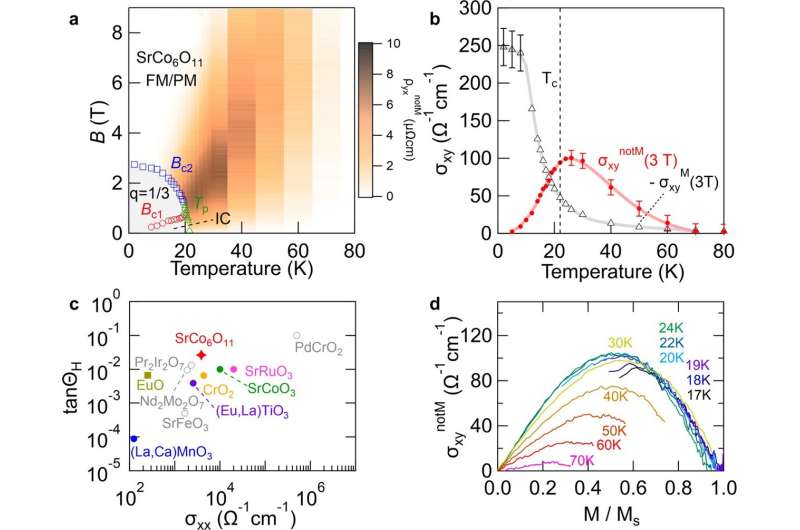This article has been reviewed according to Science X's editorial process and policies. Editors have highlighted the following attributes while ensuring the content's credibility:
fact-checked
trusted source
proofread
Researchers observe a large anomalous Hall effect triggered by spin-fluctuating devil's staircase

A research group from University of Tsukuba has discovered that fluctuations of electron spins in magnetic materials trigger a large anomalous Hall effect during phase transition known as the devil's staircase magnetic transition.
This discovery is pivotal for the advancement of magneto-thermoelectric conversion, an environmentally friendly power generation technology, potentially leading to the development of new thermoelectric conversion materials. The study is published in npj Quantum Materials.
Here's a bit of background: When an electric current flows through a metal sample in a magnetic field, it experiences the Lorentz force. This force generates a voltage perpendicular to the magnetic field and current—a phenomenon referred to as the Hall effect.
In magnetic metals, a similar phenomenon—known as the anomalous Hall effect—may occur independently of an external magnetic field, particularly in ferromagnetic materials wherein electron spins are aligned. Generally, this alignment—and thus the anomalous Hall effect—only manifests below a certain temperature, known as the magnetic transition temperature. Above this temperature, the spins become disordered, leading to the near disappearance of the anomalous Hall effect.
Although the anomalous Hall effect can occur above the magnetic transition temperature when spins are aligned by an external magnetic field in theory, it is usually exceedingly weak.
In this study, the researchers observed a large anomalous Hall effect at temperatures exceeding the magnetic transition temperature in the magnetic material SrCo6O11, which exhibits a unique magnetic transition phenomenon known as the "spin-fluctuating devil's staircase."
Notably, the magnitude of the anomalous Hall effect—or the anomalous Hall angle—was among the largest recorded for magnetic oxides. The research suggests that this significant effect likely stems from the intense scattering of conduction electrons due to a specific type of spin fluctuation known as spin-flip fluctuation.
This large anomalous Hall effect has significant implications for the principle of magneto-thermoelectric conversion. The findings of this study provide a new principle for designing materials for this technology, which could have a substantial impact on the development of new thermoelectric conversion materials.
More information: Naoki Abe et al, Large anomalous Hall effect in spin fluctuating devil's staircase, npj Quantum Materials (2024). DOI: 10.1038/s41535-024-00653-3
Provided by University of Tsukuba





















